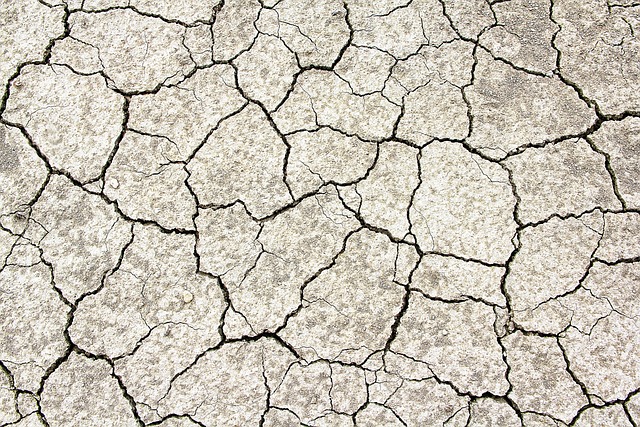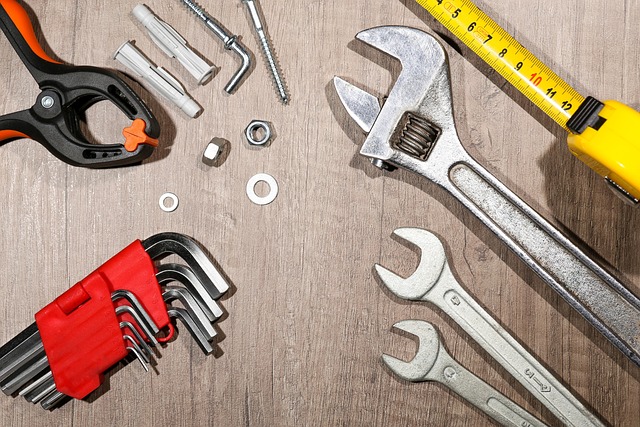Concrete wall cracks, caused by various environmental factors, range from mild to severe. Effective repair involves assessing crack types (vertical, horizontal, diagonal, network), identifying root causes, and using suitable materials like epoxy injection kits, hydraulic cement, or fiber-reinforced composites. A six-step repair process includes inspection, cleaning, mixing a polymer compound, filling and smoothing the gap, curing, and applying protective coatings. Common homeowner mistakes are neglecting root causes and using incompatible materials, which can lead to recurring issues. Regular maintenance, including inspections, sealing, and coating, prevents and manages cracks, extending concrete wall lifespans.
Concrete walls, despite their strength, are susceptible to cracks due to various environmental factors. This article is a comprehensive guide to navigating the process of crack repair, from identifying different types of cracks and assessing damage to choosing the right tools and materials. We’ll walk you through each step, ensuring a successful repair. Additionally, we’ll highlight common mistakes to avoid and provide maintenance tips to prevent future concrete wall cracks, empowering you with the knowledge for long-lasting solutions.
Understanding Concrete Wall Cracks: Causes and Types

Concrete wall cracks can range from shallow, hairline fractures to deep, structural breaks, each with its own set of causes and potential implications. Understanding these is crucial for effective crack repair. The most common causes include movement and settling of the concrete due to changes in temperature and moisture levels, as well as environmental factors like wind, snow, and ice. Over time, this movement can lead to various types of cracks: vertical, horizontal, diagonal, or network-like.
Vertical cracks often result from differential settlement, while horizontal cracks usually signal significant moisture issues or structural instability. Diagonal cracks may indicate tension buildup due to uneven shrinkage, and network cracks suggest widespread concrete degradation. Proper crack repair involves identifying the specific type and addressing the underlying cause to prevent further damage and ensure longevity of the structure.
Evaluating the Extent of Damage: Crack Assessment

Evaluating the extent of damage is a crucial step in concrete wall repair, particularly when it comes to crack assessment. Before beginning any restoration work, carefully inspect the wall to determine the severity and type of cracks present. Cracks can vary from hairline fractures to large, diagonal or vertical splits. Each type requires a specific approach for effective crack repair.
Focus on identifying the causes behind these cracks, as this will guide the repair process. Environmental factors like frost, moisture, and settlement can contribute to concrete cracking. Understanding the cause allows for targeted solutions, ensuring long-lasting repairs. Measuring and documenting cracks is also essential, providing a baseline for monitoring future changes and assessing the success of the repair work.
Materials and Tools for Effective Crack Repair

When it comes to repairing concrete walls, having the right materials and tools is crucial for effective crack repair. The first step is to assess the extent of the damage and choose an appropriate repair method. For small cracks, a simple process involving epoxy injection or hydraulic cement can be highly effective. Epoxy injection kits are popular choices due to their ability to fill deep cracks and provide exceptional strength. These kits typically include a two-part epoxy, mixing tools, and injection nozzles. On the other hand, hydraulic cement is a fast-setting concrete that can be used to patch smaller cracks and holes.
For more severe cases or larger breaks, you might require advanced materials like fiber-reinforced composite patches or precast panels. Tools such as chisels, hammers, wire brushes, and power drills will assist in preparing the cracked surface for repair. Remember, proper preparation ensures a durable and long-lasting crack repair solution.
Step-by-Step Guide to Repairing Concrete Wall Cracks

Concrete wall cracks can be a common issue, but repairing them is a straightforward process that can significantly enhance the structural integrity and aesthetic appeal of your property. Here’s a step-by-step guide to effectively repairing concrete wall cracks:
1. Inspect and Assess: Begin by thoroughly inspecting the crack to determine its severity and cause. Different types of cracks require specific repair methods. Look for signs of active movement, such as widening or deepening of the crack over time, which might indicate underlying structural issues.
2. Clean the Crack: Use a wire brush or power washer to remove any loose concrete, debris, and stains from the crack. Ensure the area is free from contaminants to promote better adhesion during repairs. This step is crucial for long-lasting crack repair.
3. Mix Repair Compound: Prepare a mix of crack repair compound (a special polymer-based material designed for concrete cracks) according to the manufacturer’s instructions. The consistency should be similar to that of peanut butter.
4. Fill the Crack: Apply the mixed compound into the cleaned crack using a putty knife or trowel, ensuring it completely fills the gap. Press the compound firmly into the crack and smoothen the surface for an even finish.
5. Smoothen and Level: Once filled, use the tool used for application to gently smoothen the repair area until it’s level with the surrounding concrete. Remove any excess compound by carefully scraping off the top layer.
6. Allow to Cure: Follow the manufacturer’s instructions for curing time. Typically, you’ll need to wait 24-48 hours before applying any sealing or protective coatings. Proper curing ensures the repair compound hardens and bonds securely with the concrete.
Common Mistakes to Avoid During Concrete Wall Repair

When repairing a concrete wall, many homeowners make mistakes that can compromise the integrity of the structure and lead to future damage. One of the most common errors is neglecting to address the root cause of cracks. Simply patching over cracks without understanding why they formed in the first place can result in recurring issues. It’s crucial to identify if the cracks are due to settlement, shifting soil, structural problems, or water damage before initiating repair. Trying to fix a larger structural issue with quick fixes like caulk or superficial repairs will only lead to more extensive and costly renovations down the line.
Another mistake to avoid is using the wrong materials for crack repair. Different types of concrete require specific repair methods and products. Using an inappropriate sealant or filler can cause discoloration, weaken the wall, or fail to provide long-lasting protection against moisture and further damage. Always opt for high-quality, compatible materials suitable for your particular concrete type, ensuring a strong, durable repair that will withstand the elements and the test of time.
Maintaining and Preventing Future Concrete Wall Cracks

Regular maintenance is key to preventing future concrete wall cracks. Inspect your walls periodically for any signs of damage or stress, such as bulges, shifts in alignment, or small cracks. Addressing these issues early can prevent them from escalating. Simple preventive measures like applying a quality sealer to the surface can help protect against moisture intrusion, a common cause of concrete cracking. Keep the area around your walls well-drained and free from excessive vegetation pressure to reduce stress on the structure.
After repairing existing cracks using methods like injection or filling, take steps to ensure longevity of the fix. This may involve applying a coating or sealant to the repaired area to shield it from further damage. Regular cleaning and maintenance will also help prevent new cracks from forming. By implementing these preventive strategies, you can extend the lifespan of your concrete walls and avoid costly crack repairs down the line.
